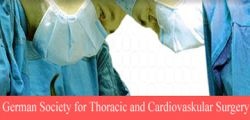Biotechnology for regenerative surgery
Tissue engineering caused a stir at the 34th Annual Meeting of the Germany Society for Thoracic and Cardiovascular Surgery.

The first success in the use of engineered tissue during surgery on tumours has been reported, and researchers are also focusing on its potential for heart valves. If laboratory results can be transferred into clinic use, this will particularly benefit children with cardiovascular diseases, Holger Zorn reports
Tissue engineering - transferring a patient’s own cells to a biological, or artificial, tissue matrix - is progressing towards the development of new implants to repair or replace damaged organs. At the meeting, Professor Axel Haverich MD, introduced a technology developed by the Leibniz Laboratories, at the Medical University Hanover, and first used two years ago to treat oesophagus tumours. In that procedure, a piece of the small intestine is removed from a deceased patient, then completely cleared of mucous membrane, which uncovers the tissue, its collagen fibres and capillary vessels: the matrix. Endothelial cells are then gathered from the proposed recipient and these are used to completely colonise the matrix, in a bio-reactor. The form and function are prepared to such a level that the matrix can be implanted into the recipient as viable tissue. The body’s own processes ensure that final stability and full functions can be achieved. The critical point is that the connection to the vascular system through arterioles and venoles is successful. Due to comprehensive colonisation with autologous cells the immune system does not recognise the implant as foreign; the danger of rejection is avoided and transmission of infections is ruled out.
The first animal experiments with heart valves have taken place, and have shown that, following implantation, these valves actually grow with the recipient. If we succeed in transferring these experiments to humans this could, for example, spare children repeated operations during their periods of growth: ‘This would be the breakthrough for individualised, lasting surgery,’ Professor Haverich concluded.
01.03.2005











